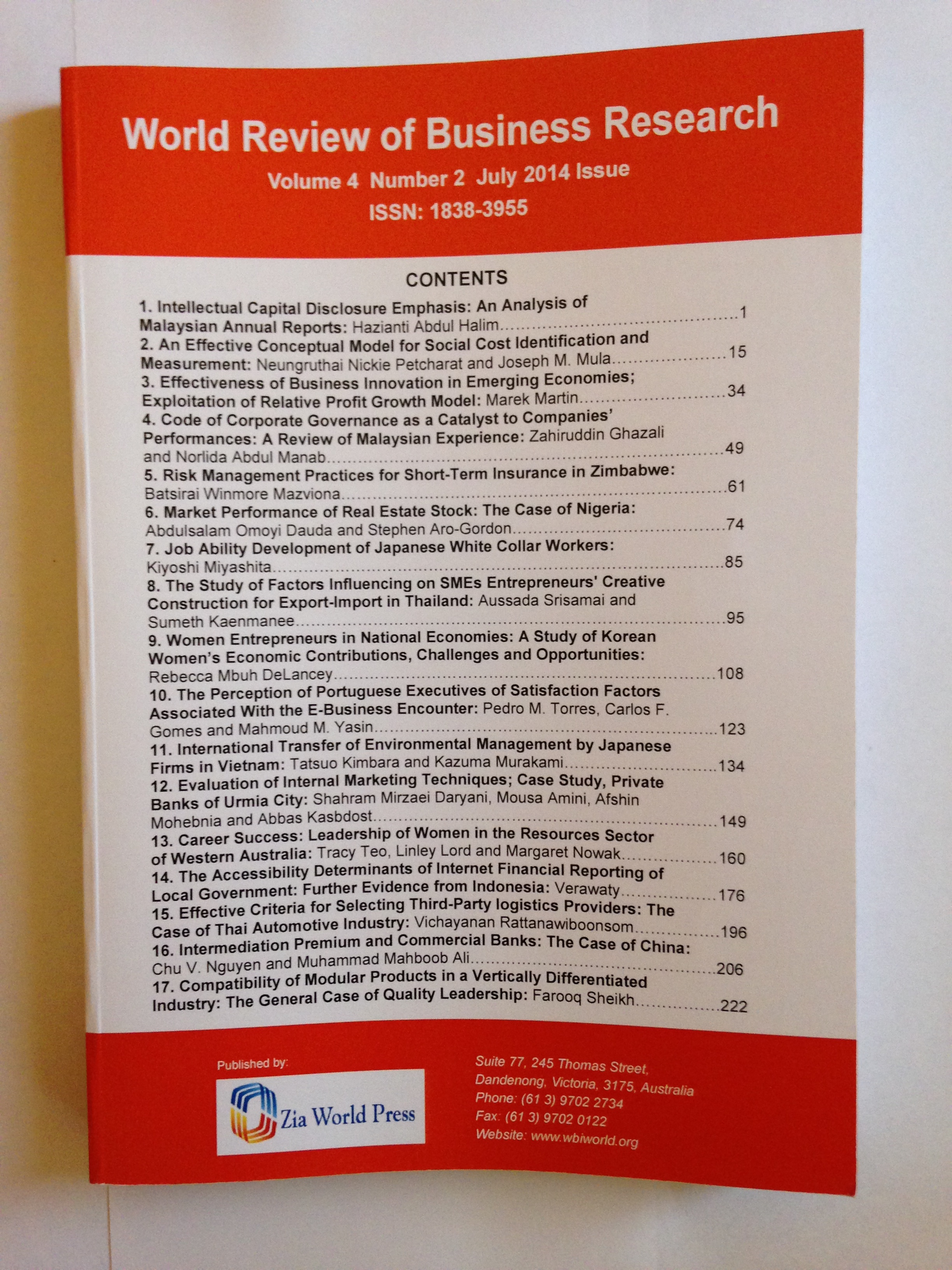November 2012 (World Review of Business Research)
Total Articles - 9

